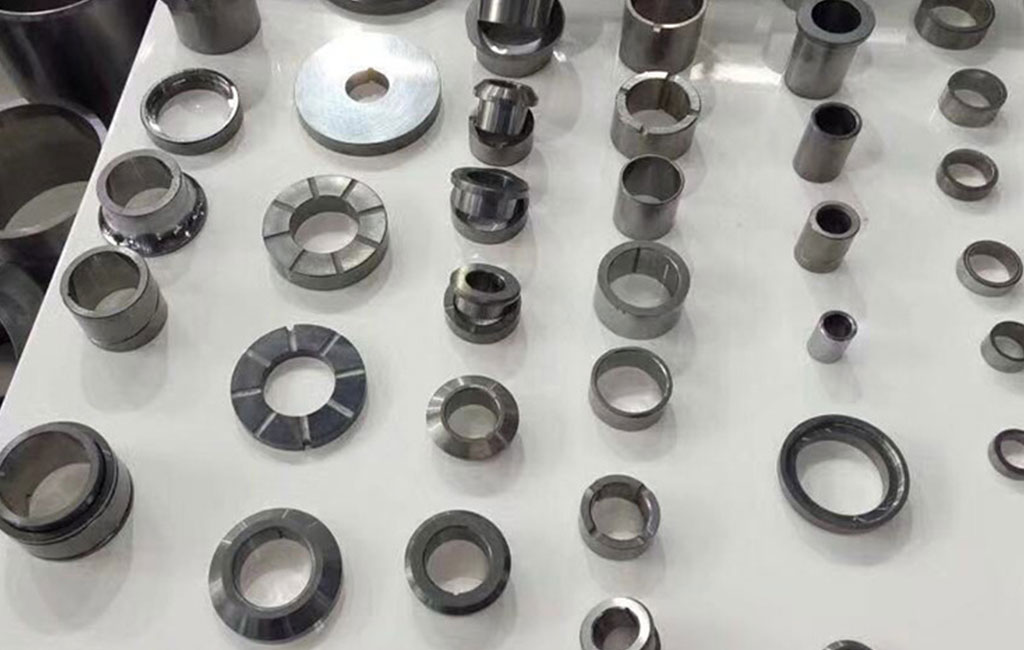Cemented carbide as “industrial teeth” is famous for its high hardness, high strength, corrosion resistance and wear resistance. With the continuous expansion of cemented carbide market demand, cemented carbide is widely used in construction, military industry, electronic communication, robotic cnc machining components,aerospace, machining, metallurgy, oil exploration, mining excavation and other fields. Today let’s talk about the identification knowledge of cemented carbide grades.
Cemented carbide grades are mainly divided into three categories, which are cemented carbide grades for cutting tools, cemented carbide grades for geological and ore tools, and cemented carbide grades for wear-resistant parts.
1. Cemented carbide grades for cutting tools

Cemented carbide grades for cutting tools are mainly divided into six categories: P, M, K, N, S, and H according to the field of use. The identification of cemented carbide grades for cutting tools mainly detects its elemental composition, Rockwell hardness, Vickers hardness, bending strength, metallographic structure (porosity, non-combined carbon, macroscopic pores) and other indicators, and the alloy performance recommended by operating conditions is mainly Detect wear resistance, toughness, cutting speed, feed rate and other indicators.
- 1. Grade P Cemented carbide grouping grades mainly include P01, P10, P20, P30, P40, the main components of which are based on TiC and WC, and use Co (Ni+Mo, Ni+Co) as the binder of hard alloys. Alloy or coated alloy, grade P cemented carbide is mainly used to process long chip materials such as steel, cast steel, long cutting malleable cast iron and so on.
- 2. Grade M cemented carbide group grades mainly include M01, M10, M20, M30, M40, the main component of which is based on WC, uses Co as a binder, and adds a small amount of TiC (TaC, NbC) cemented carbide Or coating alloy, brand M cemented carbide is mainly used to process general alloy materials such as stainless steel, cast steel, manganese steel, malleable cast iron, alloy steel, and alloy cast iron.
- 3. Grade K cemented carbide group grades mainly include K01, K10, K20, K30, K40, the main component of which is based on WC, uses Co as binder, and adds a small amount of TaC, NbC cemented carbide or coating Alloy, grade K cemented carbide is mainly used to process short-chip materials such as cast iron, chilled cast iron, short-chip malleable cast iron, and gray cast iron.
- 4. Grade N cemented carbide group grades mainly include N01, N10, N20, N30, the main component of which is based on WC, uses Co as a binder, and adds a small amount of TaC, NbC or CrC cemented carbide or coating Alloy, grade N cemented carbide is mainly used to process non-ferrous metal materials such as aluminum, magnesium, plastic, wood and so on.
- 5. Grade S Carbide grouping grades mainly include S01, S10, S20, S30, the main component of which is based on WC, uses Co as a binder, and adds a small amount of TaC, NbC or TiC cemented carbide or coating Alloy, grade S cemented carbide is mainly used to process heat-resistant steel, various heat-resistant and high-quality alloy materials containing nickel, cobalt and titanium.
- 6. Grade H cemented carbide group grades mainly include H01, H10, H20, H30, the main component of which is based on WC, uses Co as a binder, and adds a small amount of TaC, NbC or TiC cemented carbide or coating Alloy, grade H cemented carbide is mainly used to carbide machining hard cutting materials such as hardened steel and chilled cast iron.
2. Cemented carbide grades for geological and ore tools

The characteristic code of cemented carbide grades for geological and ore tools is represented by G, and the group codes mainly include 05, 10, 20, 30, 40, 50, and 60. Classification codes are A, B, C, D, E, F, W, Z.
The indication rules of cemented carbide grades for geological and ore tools mainly include characteristic codes, classification codes, group codes, and subdivision codes.
The main components of cemented carbide for geological and ore tools are cemented carbide or coating alloy with WC as the base, Co as the binder, and trace elements added. The identification of cemented carbide grades for geological and ore tools mainly detects its elemental composition, Rockwell hardness, Vickers hardness, bending strength, metallographic structure (porosity, non-combined carbon, macroscopic pores), etc., and alloy properties recommended by operating conditions It is enough to mainly detect wear resistance and toughness indicators.
3. Carbide grades for wear-resistant parts

The characteristic code of the cemented carbide grade for wear-resistant parts is represented by L, and the classification codes mainly include S, T, Q, and V.
The main component of cemented carbide for wear-resistant tungsten machining parts is based on WC, Co (Co+Ni) as binder, and cemented carbide or coating alloy with trace elements added. The identification of cemented carbide grades for wear-resistant parts mainly detects its elemental composition, Rockwell hardness, Vickers hardness, bending strength, metallographic structure (porosity, non-combined carbon, macroscopic pores) and other indicators.







